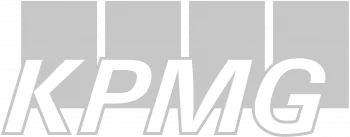What is a Job Description?
The job description is the primary component for each individual job position you need to hire. This is where you provide an overview of the role, its responsibilities, how it fits into your company, and the requirements, experience and skill set necessary to be considered for it. The job description should both be crafted to include everyone you want to consider but exclude those clearly not qualified to avoid unnecessary time on everyone’s part.
The job description is what you’ll typically post on your company website and job boards, share with internal and external recruiters, and promote through other potential candidate sourcing channels such as your current employees’ referrals.
Below, you can find a number of standard job descriptions for the most popular positions. Use the job description most appropriate for the role you’re hiring but note that these are only a ‘start.’ You should definitely spend the time to customize the job descriptions below.
Feel free to start with any of these standard job descriptions below and make them your own with what makes your company and the opportunity unique!
Accounting Job Descriptions
Administration and Office Support Job Descriptions
Advertising, Arts & Media Job Descriptions
Animals, Farming & Conservation Job Descriptions
Banking and Financial Services Job Descriptions
Call Center and Customer Service Job Descriptions
Community Services and Development Job Descriptions
Construction Job Descriptions
Consulting and Strategy Job Descriptions
Design and Architecture Job Descriptions
Education and Training Job Descriptions
Engineering Job Descriptions
Executive Job Descriptions
Healthcare and Medical Job Descriptions
Hospitality and Tourism Job Descriptions
Human Resources and Recruitment Job Descriptions
Information Technology Job Descriptions
Insurance Job Descriptions
Legal Job Descriptions
Manufacturing, Transport, and Logistics Job Descriptions
Marketing and Communications Job Descriptions
Real Estate and Property Job Descriptions
Retail and Consumer Products Job Descriptions
Sales Job Descriptions
Science and Technology Job Descriptions
Sports and Recreation Job Descriptions
Trades and Services Job Descriptions
Why Do You Need a Job Description?
As a recruiting manager or hiring manager, think of your job description the way your sales reps or marketing team think about their promotional material, website or collateral. It’s likely the primary vehicle to draw in prospects, i.e., candidates, to what you’re selling – a new opportunity at your organization.
You want to highlight why they should be interested, how it’s differentiated from other seemingly ‘like products and what’s the benefits they should get from joining your team. Only by emphasizing what’s special, in a way, your ‘value proposition: can you break through the clutter of a multitude of competing opportunities and get the highest qualified candidates’ attention.
How Do You Write a Job Description?
Writing a job description is a crucial first step to adding anyone to your organization. To get started, there’s a basic process you should generally follow.
- Gain Position Approval: Make sure the position’s been approved. There’s nothing worse than crafting a job description, posting it, beginning the interviewing process and then finding out that you can’t bring anyone on.
- Confirm Title & Compensation: Lock down the title level (i.e., are you hiring a ‘manager: ‘senior manager’ or a ‘director’). As part of the approval process, make sure to have internal agreement and budget approval on a compensation range that both is at a market competitive level and works within your existing compensation framework.
- Understand the Role: To define a job description’s roles and responsibilities, you need to know what this person will be doing, how it fits into your existing organization and team, and the type of person you’re seeking. If you’re not the hiring manager, it’s critical that you spend time with the hiring manager (and others the person would work with as well) to detail everything at a granular enough detail so you have the information you need to craft an appropriate job description.
- Include Keywords: Most job searchers do just that – search for applicable jobs using relevant keywords based on what they’re seeking in their next role. Make sure to include those keywords most likely to be used by candidates to find a job like yours, whether it’s particular technology (e.g., Hubspot, Salesforce, Java, Python) or specific topics (social media, content marketing, front end development, tax preparation).
- Maintain Consistency: Understand what your company’s other job descriptions look like. In general, you should strive for a consistent structure. Presenting an inconsistent view across job openings can lead candidates to presume the company isn’t particularly well organized across other functions as well.
- Review & Revise: It should go without saying but make sure you give your job description a thorough review. Make sure to address any questions that seem obvious about the role a candidate would likely want to know before applying. Get any feedback you can, and incorporate it before posting and sharing.

What Should Be Included in a Job Description?
For most positions today, it’s a buyer’s market for highly qualified candidates. Today, there are literally millions of job postings available online for job seekers to wade through.
Your job description needs to be both enticing to draw in the candidates you want with enough detail to make sure you’re screening appropriately. To understand the details of how to write a compelling job description, check out our comprehensive post on the subject.
However, at a high level, most job descriptions comprise these main components:
- Position Title
- Position Location
- Position Overview
- Position Responsibilities
- Company Overview
- Team
- Benefits & Perks
But that’s not all! There are more details in each of these plus other important elements you’ll likely want to include (as well as what not to forget when you’re writing a job description, and why you may be missing out on top talent) all in the ‘how to write a job description’ post.
What is the Difference Between a Job Specification and a Job Description?
In many cases, the terms ‘job specification’ and ‘job description’ are used interchangeably. But usually a job specification will consist of the specific details like minimum job requirements, necessary education background, skills, training and experience. The focus is on letting a candidate see if a given job is appropriate or not and worth considering.
Job descriptions should be somewhat broader, deeper and more expansive. They’ll include the job specifications, along with an overview of the role, duties & responsibilities, what the environment is like, overview of the company and perks, and even how the role fits into a company’s broader strategy and mission.
What is the Difference Between a Role Description and a Job Description?
While a ‘role’ can be thought of as somewhat broader than simply a ‘job; in practice, a role description is basically the same as a job description. Outside the US, sometimes a role description may be the preferred term but in the US, job description is what most everyone uses.
What Are Some Tips on How to Write a Professional Job Description?
We’ve highlighted a number of ways to write a professional job description that will get you the results you need. A number of best practices for crafting your job description include:
- Highlight your company brand to attract the best candidates; let them know why they need to work for you!
- Make sure you’re characterizing the position properly, from title to description to responsibilities to qualifications
- Include an effective call to action to ensure your desired candidates respond
- Use job posting & hiring technology to ensure a smooth candidate experience
- Differentiate, differentiate, differentiate so qualified candidates see what’s special about your opportunity and get them to apply
Standard Job Descriptions
Above, please find standard job descriptions for many of the most common positions that companies are looking to fill. Feel free to use these to start, and customize to make them specific to your particular opportunity and company.
























